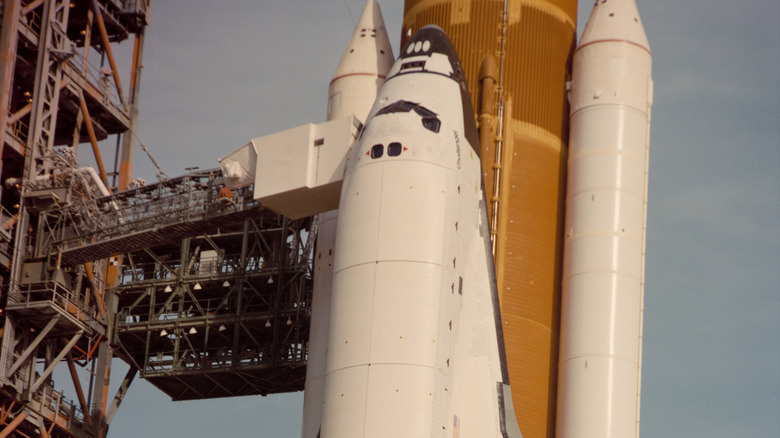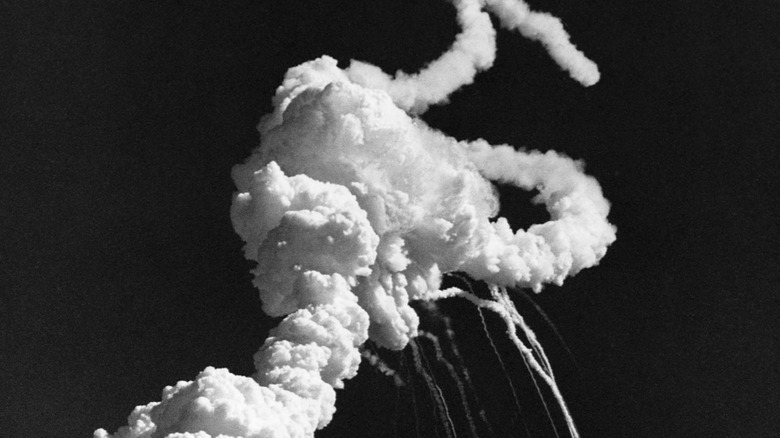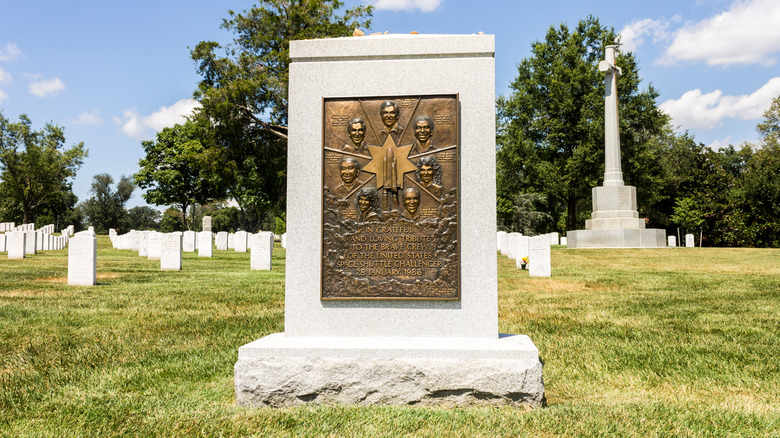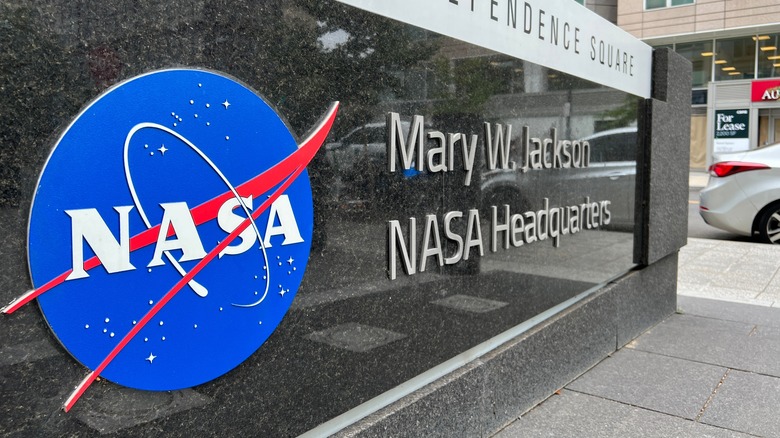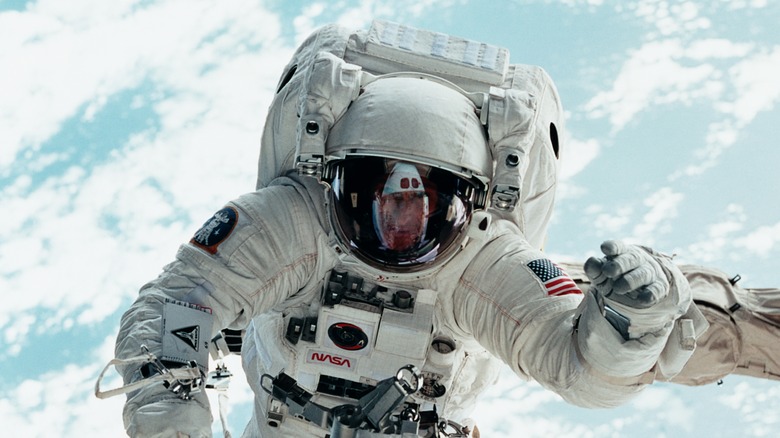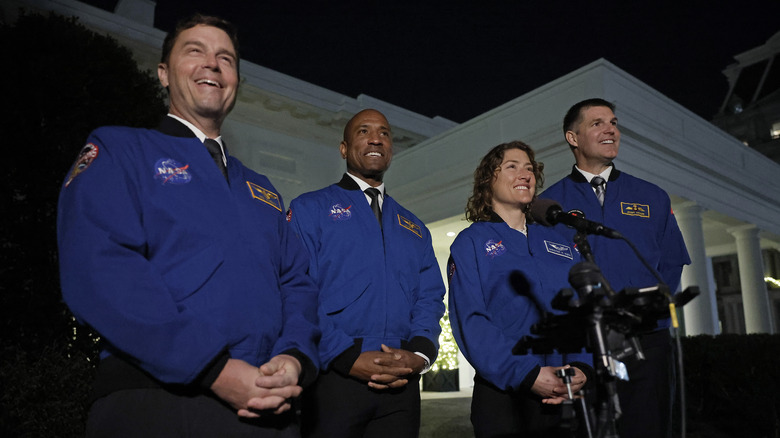Why NASA Was Never The Same After The Challenger Disaster
The morning of January 28, 1986, was just 22 degrees — especially cold for Cape Canaveral in Central Florida. The temperatures had dropped even lower, to below freezing, overnight. Even so, at 11:38 a.m. NASA launched the Space Shuttle Challenger on its 10th mission. The Challenger was already acclaimed by then for milestones that included being the first spacecraft to carry an American female astronaut and a Black astronaut into space. This mission, similarly, drew a huge amount of attention for having the first civilian onboard, a teacher named Christa McAuliffe.
Millions watched the historical launch as the Challenger lifted off, including lots of children who saw it on TV in their classrooms. Then, 73 seconds after the shuttle rocketed heavenward, it burst into flames, killing all seven people aboard. In the aftermath of one of the worst space disasters in history, NASA changed in many ways, from instituting new safety procedures to scrapping plans for more than 20 years to take civilians, including journalists and educators, on space missions.
Faulty parts and culture
President Ronald Reagan soon ordered an investigation into the tragedy. While the remains of the Challenger crew were being interred in Arlington National Cemetery, NASA's policies were being scrutinized from without by the Rogers Commission, named after William Rogers who chaired the presidential commission looking into the accident, along with the space agency's administrators. Congress also investigated the disaster.
The culprit responsible for the disaster turned out to be failed O-rings in the right solid rocket booster, which helped propel the shuttle into space. The rings, which were supposed to prevent any fuel from leaking out, failed due to the unusually cold temperatures. But there was another culprit as well: NASA's bureaucratic culture that downplayed safety concerns and suffered from a lack of accountability. This led to an unreasonably tight flight schedule for the Shuttle program, which had become the de facto system for getting satellites into space. "The nation's reliance on the Shuttle as its principal space launch capability created a relentless pressure on NASA to increase the flight rate," the Rogers Commission determined (via NASA). "Such reliance on a single launch capability should be avoided in the future."
Unheeded concerns
Like the chilling last words of the Space Shuttle Challenger's crew, which came from pilot Michael J. Smith, who uttered "uh-oh" a little more than a minute after liftoff, NASA too had realized too late that its culture had helped doom the Challenger crew. According to the Tampa Bay Times, as far back as 1971, engineers had questioned the reliability of the O-rings, but these concerns went unheeded by the administration.
On the days leading up to the launch, engineers from Thiokol, which manufactured the rings, tried to stop the flight telling NASA the O-rings were likely to fail in temperatures below 51 degrees. NASA refused to delay the launch. Among the Rogers Commission's recommendations, all nine of which NASA implemented, were several specific to the lack of communication within the agency that helped lead to the disaster. "Where management is weak, we will strengthen it," NASA Administrator James C. Fletcher said in a statement in June 1986 (via NASA Activities), "Where our internal communications are poor, we will see that they get better."
A changed culture
After the disaster, NASA pumped $2 billion into several hundred improvements. Besides equipment upgrades that included an escape hatch in the shuttles and completely redesigned solid rocket boosters, the space agency implemented major changes to its culture. NASA instituted better accountability practices and bulked up its safety crews. The accountability improvements included a revamped management structure to "eliminate" the "tendency of management isolation" and a forum "for healthy debate" in which to discuss potential technical problems, according to a 2010 NASA report. The agency also funneled more astronauts with real-world experience into management positions.
NASA scaled back the Shuttle program's flight schedule and began using reusable rockets to launch satellites into space. The agency also stopped using its Manned Maneuvering units — the backpack propulsion devices used by Shuttle astronauts to move around outside the Shuttles — and took astronauts off satellite repair duties as further safety measures for its astronauts. The space agency also created the new Office of Safety, Reliability, and Quality Assurance, responsible for "safety, reliability, and quality assurance functions related to all NASA activities and programs" and "for the direction of reporting and documentation of problems, problem resolution, and trends associated with safety," per its July 1986 response to the Rogers Commission (via NASA).
Endeavor delayed
While the Challenger explosion couldn't have been avoided given NASA's internal workings back in the early 1980s, the agency averted a near disaster in 1995, helping to prove that things at the space agency had really changed. Just prior to the scheduled launch of the Space Shuttle Endeavor, Thiokol engineers found evidence of potential problems with its O-rings. This time, NASA listened and delayed the launch for nearly a month. On September 7, 1995, the Endeavor "roared from its pad into a cloudy sky ... leaving behind a white vapor cloud" the Associated Press reported. The mission was a success.
Then, once again, disaster struck. On February 1, 2003, the Space Shuttle Columbia disintegrated during reentry due to a piece of insulation from its external rocket penetrating one of its wings. Seven more astronauts died. Like the Challenger disaster, it was a preventable accident. NASA had to once again reevaluate and revamp its culture and practices.
The end of the Shuttle Program
Between the Challenger and Columbia disasters, the Shuttle program was doomed. In 2003, President George H.W. Bush ordered the eventual retirement of the program. On July 21, 2011, the Space Shuttle Atlantis touched down at Cape Canaveral, capping off the Shuttle program's final mission. Since then, U.S. astronauts have relied on either Russian rockets or commercial spacecraft to get to and from the International Space Station.
NASA's next big manned space mission is on the Artemis II, which will travel around the Moon and is scheduled for September 2025. NASA pushed back the mission due to safety concerns. In 2021, Harmony Myers, the director of the NASA Safety Center, gave a presentation in which she reviewed the Challenger disaster and ended with three key takeaways: "We cannot become complacent. We cannot be silent when we see something we feel is unsafe. We must allow people to come forward with their concerns without fear of repercussion" (via NASA).
